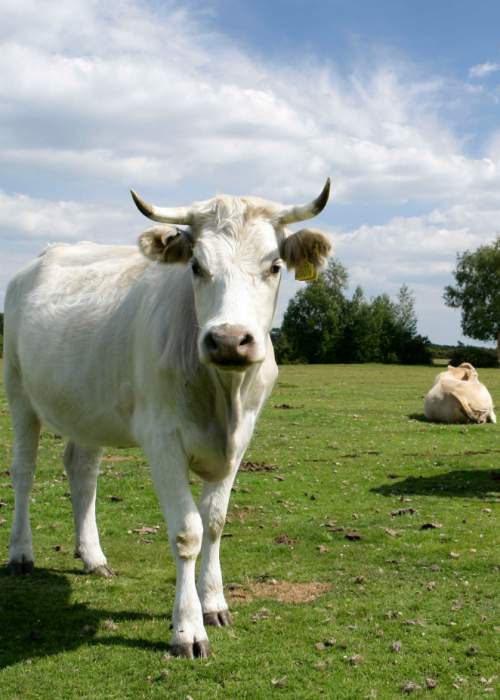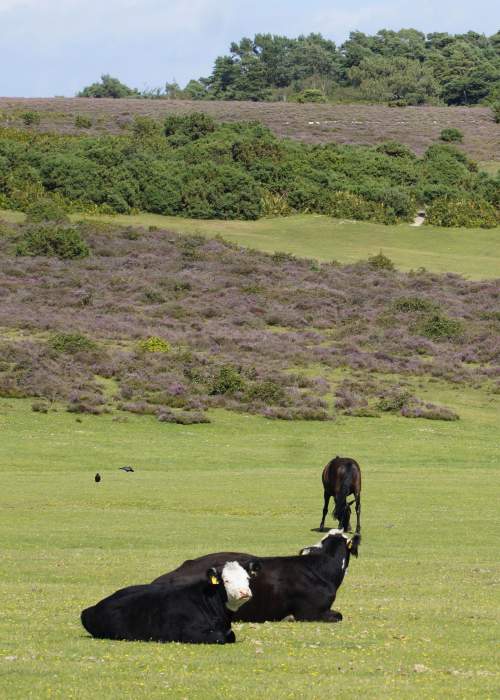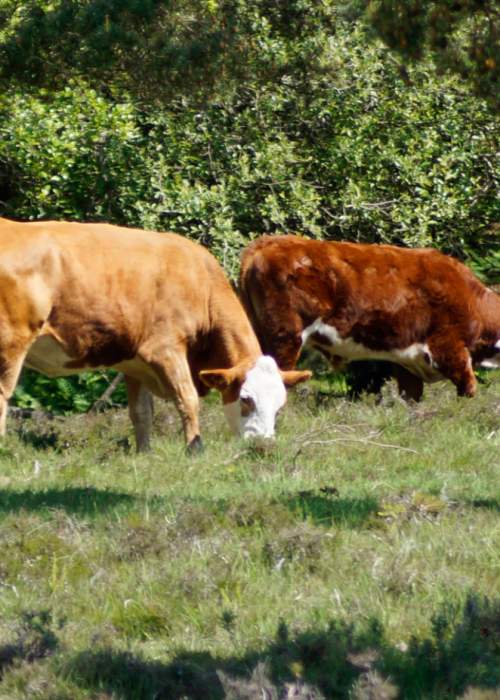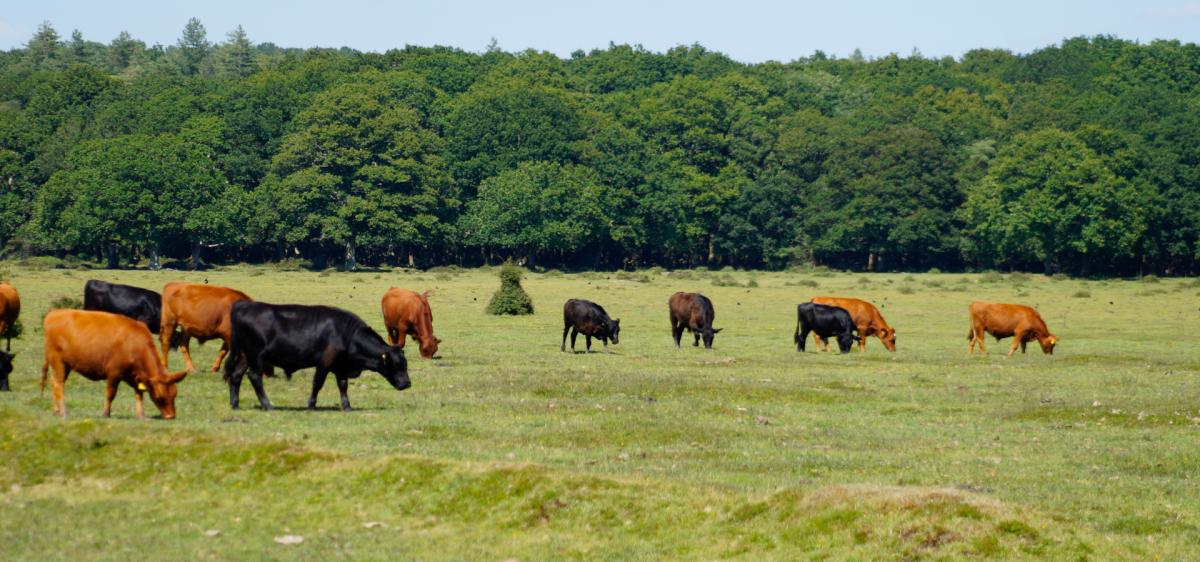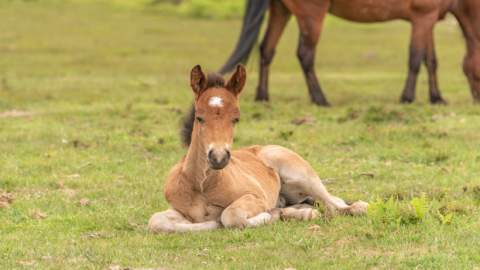New Forest Cattle
Among the most recognisable sights in the New Forest - alongside ponies, pigs and donkeys - are the free-roaming cattle. From fluffy Highland cows to striking Galloway and Hereford cross breeds, these gentle grazers have long played a vital role in shaping the landscape.
Each year, around 3,000 cattle are turned out to graze the open commons and heathland by New Forest commoners — people with inherited or acquired rights to depasture their livestock on the land. Their presence helps maintain the balance of habitats and supports the rich diversity of plants and wildlife that the New Forest is known for.
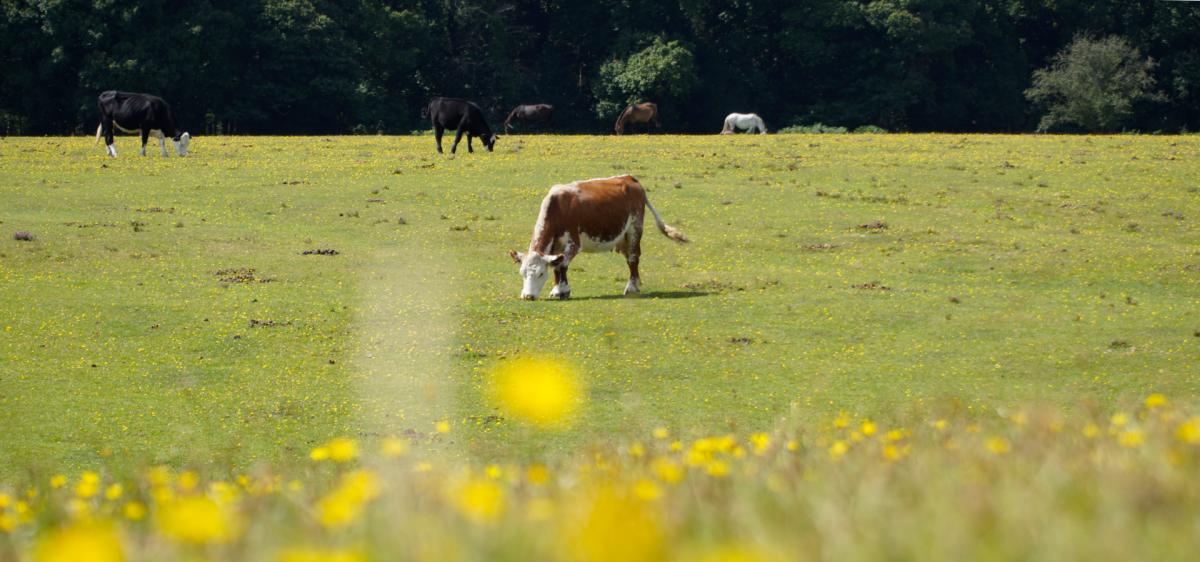
Why cattle matter
Grazing by cows plays a crucial part in keeping the New Forest’s ecosystems healthy. As they browse and move through the land, they naturally manage vegetation, keeping grassland open, controlling scrub, and creating a home for species like the marsh gentian and the smooth snake.
While ponies and donkeys are more visible year-round, cattle tend to be most active during the warmer months. Many are brought in for winter, as not all breeds are suited to the colder weather - though some hardier types, like Highland and Galloway cattle, remain out through the frostier months.
Cows are typically gathered in autumn to protect them from eating fallen green acorns, which are toxic to both cattle and ponies. You may even spot pigs in the New Forest during this time - turned out to eat the acorns in a centuries-old practice known as pannage.
Spotting New Forest cattle
You’ll often see cattle grazing peacefully in open woodland, across heathland, or by streams and pools. Some of the best places to encounter them are along New Forest walking routes around Brockenhurst, Beaulieu, or Bolderwood.
While cows are usually calm, they are large, powerful animals - and like any animal, they can become protective, especially of their young. If you see a calf, give it and its mother space, and always keep dogs on a lead when near livestock.
Bulls are not permitted to roam the open forest, but you may occasionally see calves out with their mothers. Many commoners choose to bring their cows back to their holdings before calving to ensure a safe birth, returning them to the forest once the calves are strong enough.
Cattle and the roads
Free-roaming cattle have as much right to the roads as drivers do - in fact, animals have right of way on all unfenced New Forest roads. Cows may step out without warning, so please drive slowly and carefully at all times, especially at night or in poor visibility.
Please help protect them by sticking to the 40mph speed limit and reporting any accidents immediately.
Be a Forest-friendly visitor
-
Keep your distance from all free-roaming animals - including cattle
-
Never feed or touch cows, even if they approach you
-
Keep dogs under control, especially near young calves
-
Drive with care, especially after dark or in low visibility
-
Follow the New Forest Code and respect this working landscape
A living link to tradition
The sight of cattle roaming freely through glades and across heathland is part of what makes the New Forest so special. These animals are not only beloved by locals and visitors alike - they are essential to the New Forest’s health and heritage. With care and respect from us all, they will continue to graze these ancient lands for generations to come.

